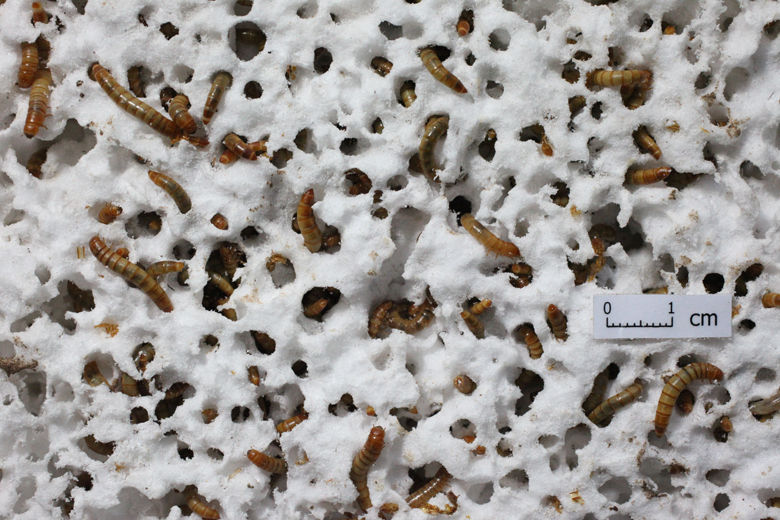By: Angelina Hard
Recent studies have found a ‘superworm’ that will improve the chances of global warming reduction by decreasing the amount of garbage in landfills. This larva can survive on the material that makes Styrofoam.
In a paper in the journal of Microbial Genomics, scientists from the University of Queensland in Brisbane, Australia, showed the larvae of a darkling beetle, named zophobas morio, can survive solely on polystyrene, commonly called Styrofoam. Sciences around the globe are currently studying the enzymes in the superworm that allow it to digest Styrofoam and hoping to find a way to commercialize it into a product.
In 2018, landfills received 27 million tons of plastic. This was 18.5 percent of all MSW landfilled. Knowing that Styrofoam accounts for as much as 30% of landfill space worldwide. Researchers have found that Styrofoam often takes 500 years to break down and decompose, having a natural way to dispose of and recycle Styrofoam would change the way of waste managers. “You cannot really escape plastic anymore — plastic waste is everywhere, this is definitely a new, arguably, better, environmentally friendly way to break it down,” said Christian Rinke, the study’s co-author.
Landfills are required to have plastic or clay lining by federal regulation. Often times lines have leakages, which can result in leachate, a liquid produced by landfill sites contaminating nearby water sources. Contaminated water sources will be detrimental to the environment. According to the U.N. Environment Program, more than 14 million tons end up in the water every year, killing animals and degrading underwater habitats.
In 2015, researchers from Stanford University revealed that mealworms could also survive on Styrofoam. The following year, Japanese scientists found bacteria that could eat plastic bottles. In April, researchers from the University of Texas found an enzyme that could digest polyethylene terephthalate, a plastic resin found in clothes, liquid, and food containers.
“If you can go all the way to the end, Rinke said, “the idea is to use the system and come up with a biological solution to recycle plastic.” The main objective of this research project is for waste managers to collect and grind Styrofoam materials and put them into a liquid solution made with superworm enzyme. The solution would dispose of the Styrofoam or digest it in a way that allows new plastic products to be created, Rinke said.
Link to article: https://www.washingtonpost.com/technology/2022/06/17/plastic-eating-superworm-garbage-crisis/











